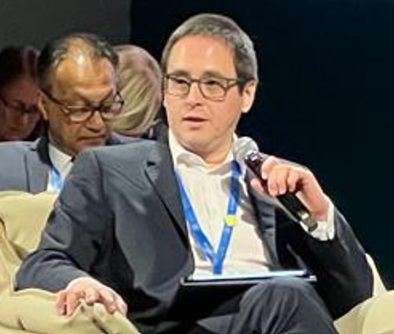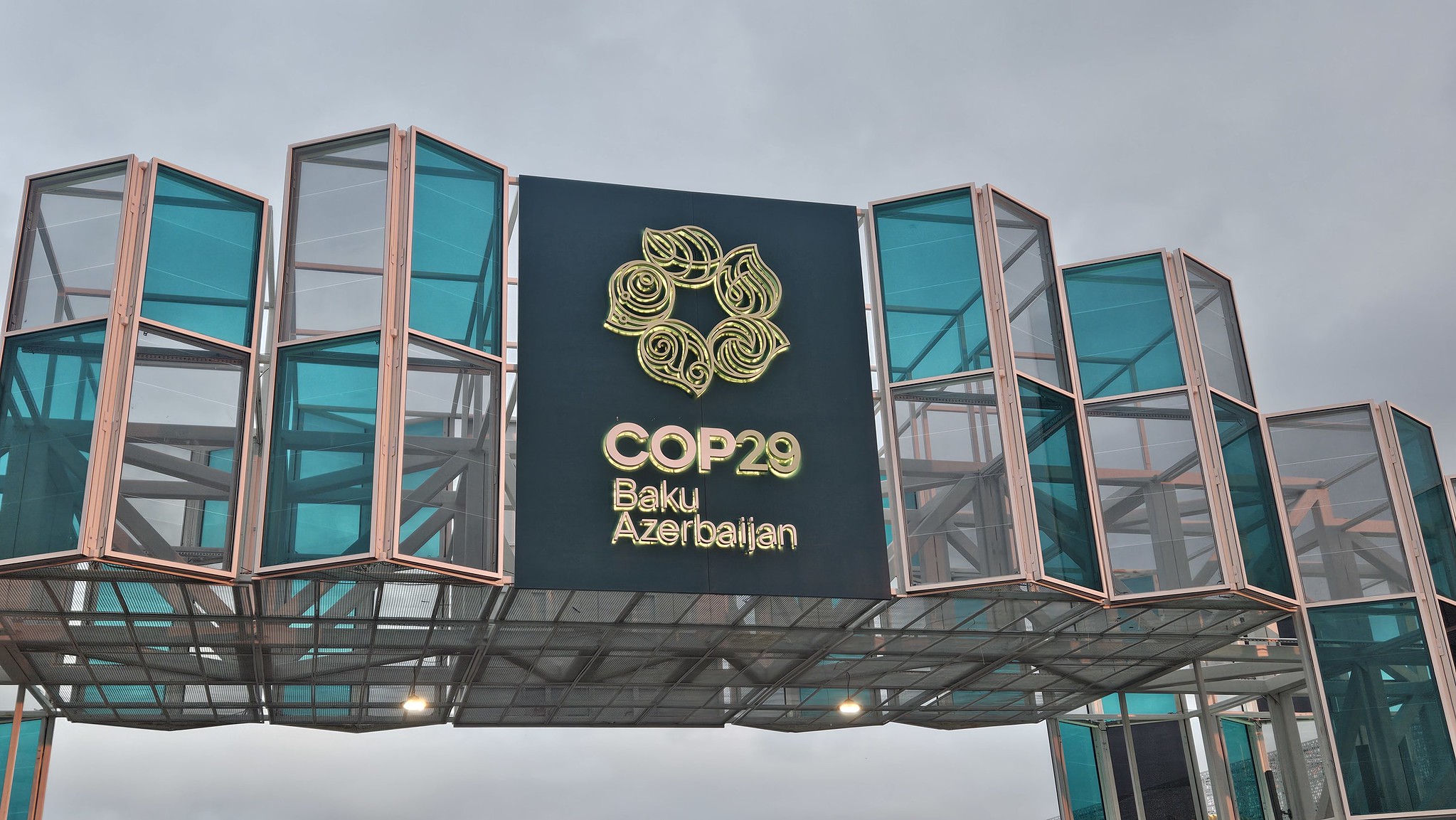By Lucas di Pietro, Chair of the Adaptation Fund Board
Washington, D.C. (January 22, 2025)–Some of the final decisions of the UN COP29 climate change conference in Baku, Azerbaijan that concluded in late November commended the work of the Adaptation Fund (AF) and strengthened its position in the international climate finance architecture going forward.
As part of the implementation decisions of countries that make up the Paris Agreement, otherwise known as the 6th meeting of the Conference of the Parties serving as the Meeting of the Parties to the Paris Agreement (CMA 6), the AF was among the climate funds specifically cited in the final text as meriting increased public investment.
CMA 6 decided that “a significant increase of public resources should be provided through the operating entities of the Financial Mechanism, the Adaptation Fund, the Least Developed Countries Fund and the Special Climate Change Fund and also decides to pursue efforts to at least triple annual outflows from those Funds from 2022 levels by 2030 at the latest, with a view to significantly scaling up the share of finance delivered through them in delivering on the (New Collective Quantified Goal on Climate Finance, or NCQG).”
The Adaptation Fund paid out US$ 136 million in 2022, and tripling it would amount to US$ 408 million.
The CMA 6 decisions further recognized that these funds are “key in supporting developing country Parties and encourages Parties to work through the governing bodies on which they serve to continue enhancing climate finance, including with respect to coherence, complementarity and access.”
These final Baku decisions regarding the AF were aligned with the overall COP29 decision on the NCQG, in which Parties reached agreement to triple climate finance to developing countries from US$ 100 billion to US$ 300 billion annually by 2035 to protect lives and livelihoods against climate disasters and leverage a boon in clean energy opportunities. The decision further secured efforts of all actors to work together toward scaling up climate finance to developing countries, from both public and private sources, to US$ 1.3 trillion a year by 2035.
In separate decisions, the CMA 6 also furthered the possibility of raising alternative funds for the AF by advancing the operationalization of a new carbon market sustainable development mechanism (Article 6.4 of the Paris Agreement), which will generate 5% of proceeds to the AF from the sales of carbon emission reduction project credits. The CMA 6 urged the supervisory body for the new mechanism and the UNFCCC Secretariat to speed up establishment of the mechanism’s registry, relevant operational procedures and needed guidelines to help ensure its success.
The AF, which has formally served the Paris Agreement since 2019, has received a similar 2% levy on sales of clean development credits through the Kyoto Protocol – though the revenue generated from it declined precipitously many years ago– so has the proper experience and expertise in place to receive the new proceeds once they start flowing. The CMA 6 recognized the potential for the mechanism to increase funding for the AF and also moved for the implementation body to make recommendations this June on the matter of arrangements for the AF to exclusively serve the Paris Agreement.
While it remains to be seen whether these collective new COP29 decisions will practically raise finance ambition among countries that translates to tripling financial outflows for the AF and creating a vibrant new carbon market, they certainly raise the bar for potentially significant increased revenue for the Fund to parlay to the vulnerable countries it serves in the near and medium term.
This is especially heartening for the AF, considering it continues to rely on voluntary contributions from developed country governments. It secured about US$ 133 million in new pledges from 11 contributors at COP29 but fell significantly short of its 2024 resource mobilization goal of US$ 300 million (and added goal of at least 15 contributors).
During COP29 and in alignment with the resulting decisions, the AF also enhanced its growing partnerships, efficiencies and collaborations with other climate funds by participating in a joint pavilion and several high-profile joint events and activities, including launching an AI-powered project search platform and signing a joint statement on human development for climate resilience.
Other COP29 decisions emanating from the 19th meeting of the Conference of the Parties serving
as the Meeting of the Parties to the Kyoto Protocol (CMP 19) included praise for the Fund’s achievements, and welcomed its additional funding modalities in locally led adaptation, innovation, and other areas. The CMP 19 emphasized expectations that the implementation of the Fund’s Medium Term Strategy for 2023-2027 “will generate significant outcomes in terms of promoting locally led adaptation, scaling up projects and replicating their results, and strengthening linkages and synergies between the strategic pillars of action, innovation, and learning and sharing.”
The AF has grown markedly in its 17-plus years of operation though its grant funding of effective concrete adaptation projects on the ground for vulnerable countries and pioneering programs such as Direct Access that build countries’ adaptation capacities. It has so far committed US$ 1.25 billion to 183 approved projects around the globe, about half in LDCs or SIDS, serving nearly 46 million beneficiaries. These projects are not only providing immediate impacts to reduce suffering and improve livelihoods in the vulnerable communities they are targeted to, but are creating a wide knowledge base to scale and speed up urgently needed adaptation solutions worldwide.
As an AF Board representative for developing countries for many years now, I’ve seen firsthand the positive impact the Fund can make on the ground in providing groundbreaking adaptation projects for the most vulnerable while also building country ownership to proactively reduce climate risks over the long term.
But the Fund faces growing demand for its work from developing countries, as climate change impacts rise. Coinciding with the 2024 UNEP Adaptation Gap Report, which cites an “extremely large” gap for adaptation finance needs in developing countries – as high as US$ 387 billion a year– the AF’s own pipeline of projects that have not yet been funded has climbed to nearly US$ 500 million.
We were pleased to see the tremendous amount of support and visibility generated for the Adaptation Fund in Baku, as well as the furthering of its partnerships and importance in the climate finance landscape. We are also thankful for the contributors that stepped up for the Fund and hope others will follow their lead going forward. We will see how these new COP decisions translate in reality, but are hopeful they at least carry the potential to develop significant funding streams for the Fund in the future that will enable it to grow and help keep pace with the record demand it continues to face.
About the Adaptation Fund
Since 2010, the Adaptation Fund has committed over US$ 1.2 billion for climate change adaptation and resilience projects and programs, including over 180 concrete, localized projects in the most vulnerable communities of developing countries around the world with over 46 million total beneficiaries. About half of its projects are in Least Developed Countries or Small Island Developing States. It also pioneered Direct Access and Enhanced Direct Access, empowering countries to access funding and develop local projects directly through accredited national implementing entities. It has further operationalized Locally Led Adaptation, and created funding windows in innovation and LLA that open climate finance access directly to a wide range of local actors.
AF Media Contact: Matthew Pueschel, mpueschel@adaptation-fund.org
Attachments
| Attachment | Type | Size |
|---|---|---|
| Blog, January 22, 2025 | 156 KB |



